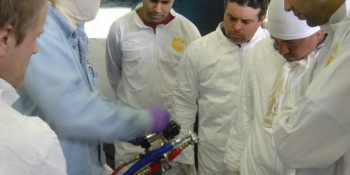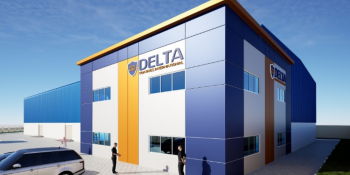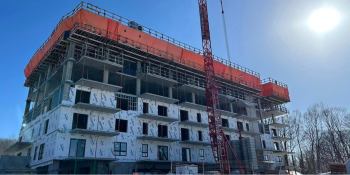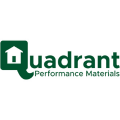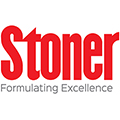Q&A Forums
cementitious foam - 100% fireproof Post New Topic | Post Reply
| Author | Comments |
|---|---|
|
drew renshaw
Posted: Aug 10, 2008 10:53 AM
|
cementitious foam - 100% fireproof
Mason,There seems to be a product called Airkrete, that solves the foam fire hazard issue. Can you please tell me if it is for real. I am a builder and would love to start foaming my houses, but I am very concerned about open attics with only a fire retardant paint on top of the foam. I realize we could sheet rock the rafters to cover the foam, but that gets expensive. Thank you for your time, Drew Renshaw |
|
mason
Posted: Aug 10, 2008 01:28 PM
|
All I know is what I read on their website. It is a material consisting of air, water and concrete that is pumped into a cavity and sets up in 2 days. You require a retaining reinforcement mesh if installing it to an open space. I am not sure you can install it overhead. It claims an R value of 3.9 per inch. (which sounds high to me based on the raw ingredients. I have no information about its effectiveness, or track record. I would be concerned about shrinking, sagging and cracking. There a few intumescent coatings that have very good fire performance over SPF. Check out the specific test results on the coatings with a specific foam. |
|
drew renshaw
Posted: Aug 10, 2008 02:59 PM
|
Thanks for replying so fast. I build large custom houses in Memphis, Tn - to see them check my website drewrenshaw.com. With such long rafters it gets pricey to foam them solid. From my study of the spray foam industry, I am leaning towards 2 pound sprayed 1.5 or 2 inches thick and 6 inch batting with mineral wool batts for the extra r value I need and for the fire protection. Or should I spray the foam with a intumescent coating and then glass batt 6 inches for extra r. Which would have a better fire resistance? and which might cost more than the other?and which might have a better insulating performance? I had hoped at one point that spray cellulose would adhere overhead without netting, but I have been told it won't. In a fire the net would burn off, cellulose would fall down and I would have nearly instantly exposed foam. As another alternative, I have a local installer of Soy based half pound foam who claims that soy based foam does not burn and does not need any coatings or fire protection. True or not? Lastly, would it be correct in assuming that the less foam installed on the rafters, the less fire hazzard? i.e. 2 inches of 2 pound would be less fuel for a fire than 4 inches of 2 pound. If this is true do you have any ideas on whether 2 inches of 2 pound plus R19 unfaced glass bats would have more burning potential than 7 inches of half pound foam? Sorry for all the questions, I have been formulating them for 2 weeks. Thanks again, Drew |
|
Jim Coler
Posted: Aug 12, 2008 09:14 AM
|
A lot of good questions! Airkrete is a fill foam only. It doesn't spray on like other foams. Once it sets up, it is harder and more brittle than PU foams. I see this as the biggest downfall to Airkrete. It has the consistency of a chalk type of material and reminds me of the old Urea Formaldehyde (UF) crap I've taken out before. If you put it under compressive or tension loads it will break or crush into dust. As the wood will expand and contract, this can't be a good situation long term as they found with the old UF. It is 100% fire proof and I've seen a penny melted on a piece of it, but the brittleness of it and how it can fill your electrical boxes are areas of concern. As far as the "flash and batt system" you've described of foam with "filter-glass", I sure wouldn't do this in my house. Regardless of what the FG manufacturer says, it does not perform as it states on the package. It also is not fire resistant either! A barn in our area caught fire with Fg and cellulose in it and the FG was gone while the cellulose was still there with only charred surfaces. I wouldn't use any FG in any house I work on - unless it was used as a backing material to prevent foam from going out a hole or something. There are some spray foams which can be left exposed without intumenscent paint in attics and crawl spaces based on the SWRI Attic and Crawlspace test. Each manufacturer has their own testing results and can direct you one what is acceptable. This is something that is still being flushed out in the codes because there are too many false statements about foams out there and the codes aren't helping. As far as the thickness and fire resistance, it really depends on the type of foam and many other factors. There are arguments both ways, but as a firefighter, I would prefer a foamed house because it can minimize the oxygen to the fire and minimize spread as quickly as exposed wood, which happen to be structural members. Many of the foams have fire retardants in them which cause them to char on the surface and even self extinguish without another fuel source to feed the fire. So, the thickness doesn't matter much if the surface chars and maintains the integrity of the under foam. Some argue that it adds to the fuel load of the structure, but it also protects structural members with a sacrificial surface. Like I said, this is still an issue which is being debated and keep looking for what the research and codes are coming out with in the near future. |
|
Luke Kujacznski
Posted: Aug 12, 2008 09:58 AM
|
Drew, You ask very good questions and I am always encouraged when builders think long and hard about something that they are doing. That being said a lot of foams out there are only tested at a 4 inch thickness in accordance with the ASTM E84 test which is fine as long as you do not want to put in foam thicker then 4 inches. There is a new standard out called the NFPA 286 in which the foam companies can test their foam in any thickness they want. Some companies have tested their foams to a thickness greater the 8 inches. So if they have completed the NFPA286 you can increase the amount of foam in the building without increase the fire hazard. 2 pound density foam have a flash point of over 1000 degrees, meaning that if the foam were to catch on fire it would probably be the last thing in the house to do so. In your area I would spray 3-4 inches of closed cell in the roof assmebly and in non-vaulted areas spray a barrier-to-ignition coating over the foam. Remember that the code states that the foam and coating must have been tested together in order to be code complient(ex your can't spray BASF foam and cover it with another companies coatin). I would avoid the bio foams. The installer you were talking to was not being honest. All foams must pass the same tests. Plus bio foams are more prone to shrinking and typically have a lower r-value per inch. Please feel free to call me and we can talk about these issues more, in a less public setting. Luke 269.217.1612 |
|
mason
Posted: Aug 12, 2008 01:46 PM
|
Lots of talk on the subject. Some of it helpful others not so. To set the record straight. I have the same degree of shrinkage on all types of foam open, closed cell, bio based foams, etc. Most of the shrinkage I have seen can be related to spraying foam in pass lifts greater than 2 inches and then coming back over it too soon for the exothermic heat to dissipate. Next, NFPA 286 is an old fire test not a new one. SWRI-99 is actually a newer test and is fairly controversial. It will most likely be replaced or severly modified very soon. The test compares foam installed in the attic to a baseline of kraft faced fiberglass batts. Fiberglass batts faced with fiberglass are not code accepted ignition barriers and can only last 1.5 to 2.5 minutes before it flames coome out the front of the room in the SWRI test. While some manufacturer's do have ICC ES approvals based on this test, remember it is a low bar to get over. The NFPA test and others (such as UL 1715, FM 4880, UBC 26-3 have been used for decades as alternative room corner tests to determine the relative fire performance of foam plastics in a variety of applications. The main problem with SPF (sprayfoam) is that it can flash at temperatures around 600 -800 degrees F. The foam surface burns rapidly creating flames and smoke in a very short period of time. The thermal barrier (ignition barrier in attics) prevents this flash from occuring. Once the flash is taken care of most spray foams are very safe to use in buildings. The foam typically chars creating its own intumescent covering that is fairly fire resistant. But the hazard is having bare foam of sufficient area that allows the flash to occur. The smaller the area the less likely the flash is a significant problem. This is why the bare sprayfoam can pass a room corner test when installed in a sill plate but typically not in an attic or wall. Building codes require that the foam plastic be tested for fire in accordance with ASTM E 84 in the thickness intended for use. But, E 84 can only test up to 4 inches, so that is why other tests are used to qualify foams that would be installed in greater thickness. It has only been recently that foam has been installed in many areas greater than 4 inches. so that is why we see more foam suppliers testing their foams in the room corner tests to obtain code approvals in thicker applications. Please read SPFA Technical document AY 126, Thermal Barriers and Ignition Barriers for the SPF Industry. It details the fire characteristics of sprayfoam, fire tests, types of thermal barriers and ignition barriers. Remember sprayfoam can be extremely hazardous if the flash potential is not addressed and relatively safe to used when it is. Good luck, |
|
mason
Posted: Aug 12, 2008 01:46 PM
|
Lots of talk on the subject. Some of it helpful others not so. To set the record straight. I have seen the same degree of shrinkage on all types of foam open, closed cell, bio based foams, etc. Most of the shrinkage I have seen can be related to spraying foam in pass lifts greater than 2 inches and then coming back over it too soon for the exothermic heat to dissipate. Next, NFPA 286 is an old fire test not a new one. SWRI-99 is actually a newer test and is fairly controversial. It will most likely be replaced or severly modified very soon. The test compares foam installed in the attic to a baseline of kraft faced fiberglass batts. Fiberglass batts faced with fiberglass are not code accepted ignition barriers and can only last 1.5 to 2.5 minutes before it flames coome out the front of the room in the SWRI test. While some manufacturer's do have ICC ES approvals based on this test, remember it is a low bar to get over. The NFPA test and others (such as UL 1715, FM 4880, UBC 26-3 have been used for decades as alternative room corner tests to determine the relative fire performance of foam plastics in a variety of applications. The main problem with SPF (sprayfoam) is that it can flash at temperatures around 600 -800 degrees F. The foam surface burns rapidly creating flames and smoke in a very short period of time. The thermal barrier (ignition barrier in attics) prevents this flash from occuring. Once the flash is taken care of most spray foams are very safe to use in buildings. The foam typically chars creating its own intumescent covering that is fairly fire resistant. But the hazard is having bare foam of sufficient area that allows the flash to occur. The smaller the area the less likely the flash is a significant problem. This is why the bare sprayfoam can pass a room corner test when installed in a sill plate but typically not in an attic or wall. Building codes require that the foam plastic be tested for fire in accordance with ASTM E 84 in the thickness intended for use. But, E 84 can only test up to 4 inches, so that is why other tests are used to qualify foams that would be installed in greater thickness. It has only been recently that foam has been installed in many areas greater than 4 inches. so that is why we see more foam suppliers testing their foams in the room corner tests to obtain code approvals in thicker applications. Please read SPFA Technical document AY 126, Thermal Barriers and Ignition Barriers for the SPF Industry. It details the fire characteristics of sprayfoam, fire tests, types of thermal barriers and ignition barriers. Remember sprayfoam can be extremely hazardous if the flash potential is not addressed and relatively safe to used when it is. Good luck, |
|
andy buff
Posted: Aug 13, 2008 08:22 PM
|
how often does the E-84 have to be done.every couple of years?or once they pass thats it? |
|
mason
Posted: Aug 14, 2008 03:48 PM
|
So long as the formula remains the same, the test does not need to be repeated. All formulas went through a change around 2005 so the data is pretty recent. |
|
andy buff
Posted: Aug 14, 2008 05:42 PM
|
Mason,the astm E84-91a test done in 1993.is this still valid?and its for the nominally 2 inch thick test sample.does this mean i can spray only 2 inches and be safe ? I need 3.5 inches to meet code R-21.Also is there any kind of audit # or somthing.so i know that i'm gettig what selling.not some other flavor of foam that does not have the testing.......thanks |
|
mason
Posted: Aug 16, 2008 07:15 PM
|
The foam used in the 1993 test would have been a different blowing agent than that used today. I doubt if it would be valid today. Yes, you are correct, the foam is valid for the thickness it is tested and not more |
|
andy buff
Posted: Aug 16, 2008 07:22 PM
|
thanks mason.what do i ask the distributor for a more recent E84 test.? or with the test that i was sent do i shop eleswhwere.thanks |
|
Gary Galloway
Posted: Aug 17, 2008 11:20 PM
|
Mason, Am I to understand that you think a foam that has passed the SWRI 99-02 test may still need an ignition barrier for safety ? I thought the purpose of this test was to determine the safety of such products !!! |
|
mason
Posted: Aug 18, 2008 07:33 AM
|
The SWRI-99 test was originally developed by Jesse Beitel of Hughes and Associates to test the relative fire safety of EPS and XPS in kneewalls of attics and crawl spaces. The foam was not installed in the ceiling. He used for comparison purposes drywall, 1/4" plywood and kraft faced fiberglass as baselines. Because there was not a test specific to ignition barriers in attics and crawl spaces, this test was adopted by a few foam suppliers to test their foam with various coatings and configurations in attics and crawl spaces. The kraft faced fiberglass was used as the baseline. If your product or assembly performed better than the kraft faced fiberglass baseline, it passed the test. In 2003, the ICC Evaluation Services formally accepted the test and its results to determine the suitability of foam and various coatings and configurations in attics and crawl spaces. Soon after, other foam plastics groups started petitioning ICC ES to drop this test procedure due to the relatively poor fire performance of the baseline. Kraft faced fiberglass burns very easily and is not a code approved ignition barrier. Eventually all of the foam plastic industry collectively decided to study the issue and try to recommend alternative testing that would be more appropriate. So, the foam plastic industry has been working over the last 1 1/2 years to develop a new criteria (pass/fail) for the test or to develop a brand new test. An interim solution has been proposed by the SPFA to use a timed pass/fail criteria of 3 1/2 minutes before flames come out of the front of the room during the fire test. This has not been approved by ICC Evaluation Services yet. So, in the meantime, ICC ES is still accepting the results of the SWRI-99 tests for the time being. But, soon a new test or test criteria will be approved and products and assemblies will require new testing. (Note: ICC ES reports have a renewal date on them, they must be reapproved by ICC ES for them to be valid after that date. Legacy reports are valid for codes up to the date that they were last approved by ICC ES. So a Legacy report that is dated May, 2004 would apply to 2003 ICC codes but not to 2006 ICC codes.) In order to determine if your foam and coating system is currently approved under ICC ES, check out the ICC Evaluation Services webpage. http://www.icc-es.org/Evaluation_Reports/index.shtml This page has links to all evaluation reports and legacy reports and their dates for renewal and/or suitability. Note: Other fire tests can be used to test products and assemblies in attics, such as NFPA 286, UL 1715, FM 4880 UL 1040 and ASTM E 119. |






